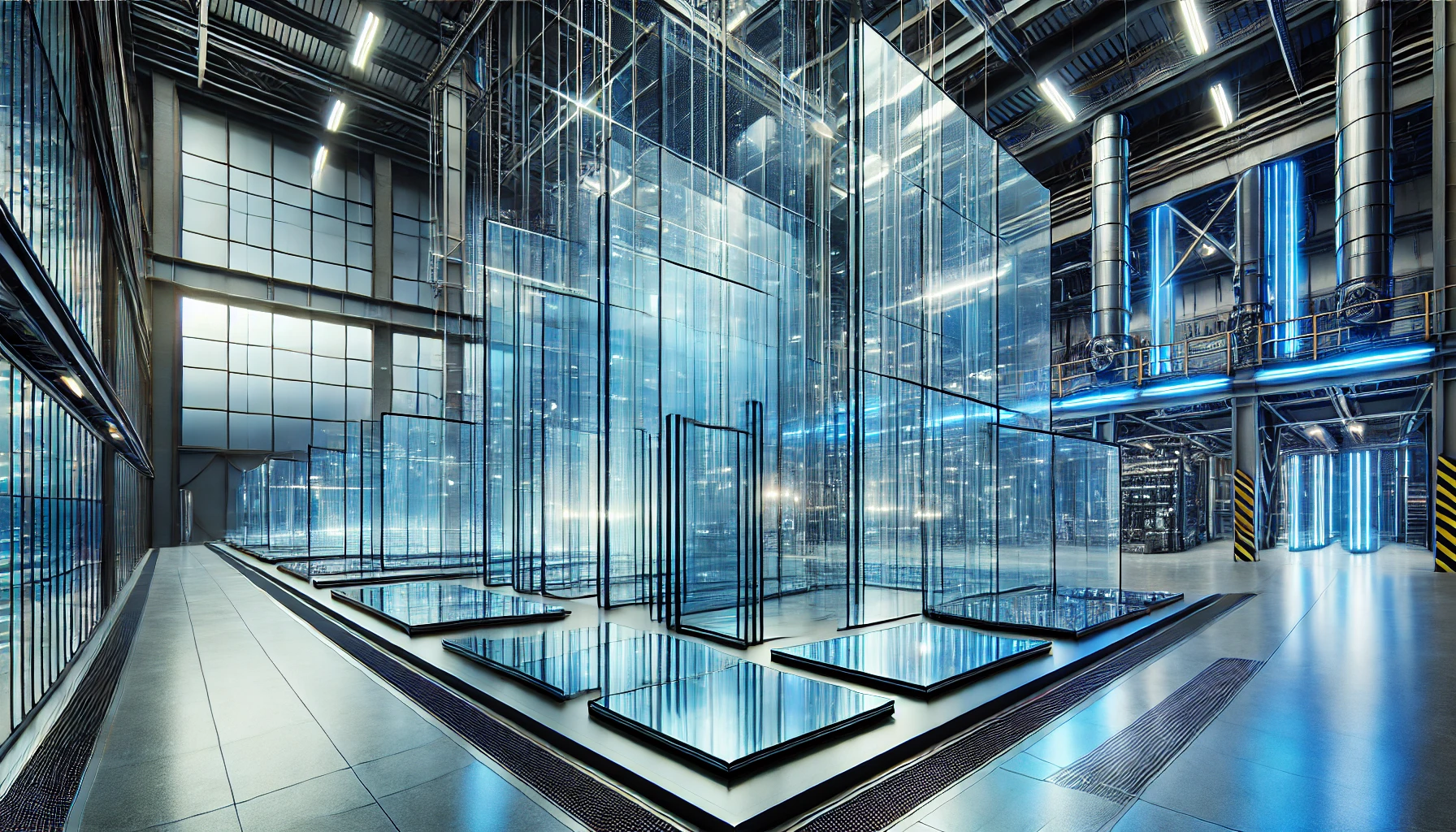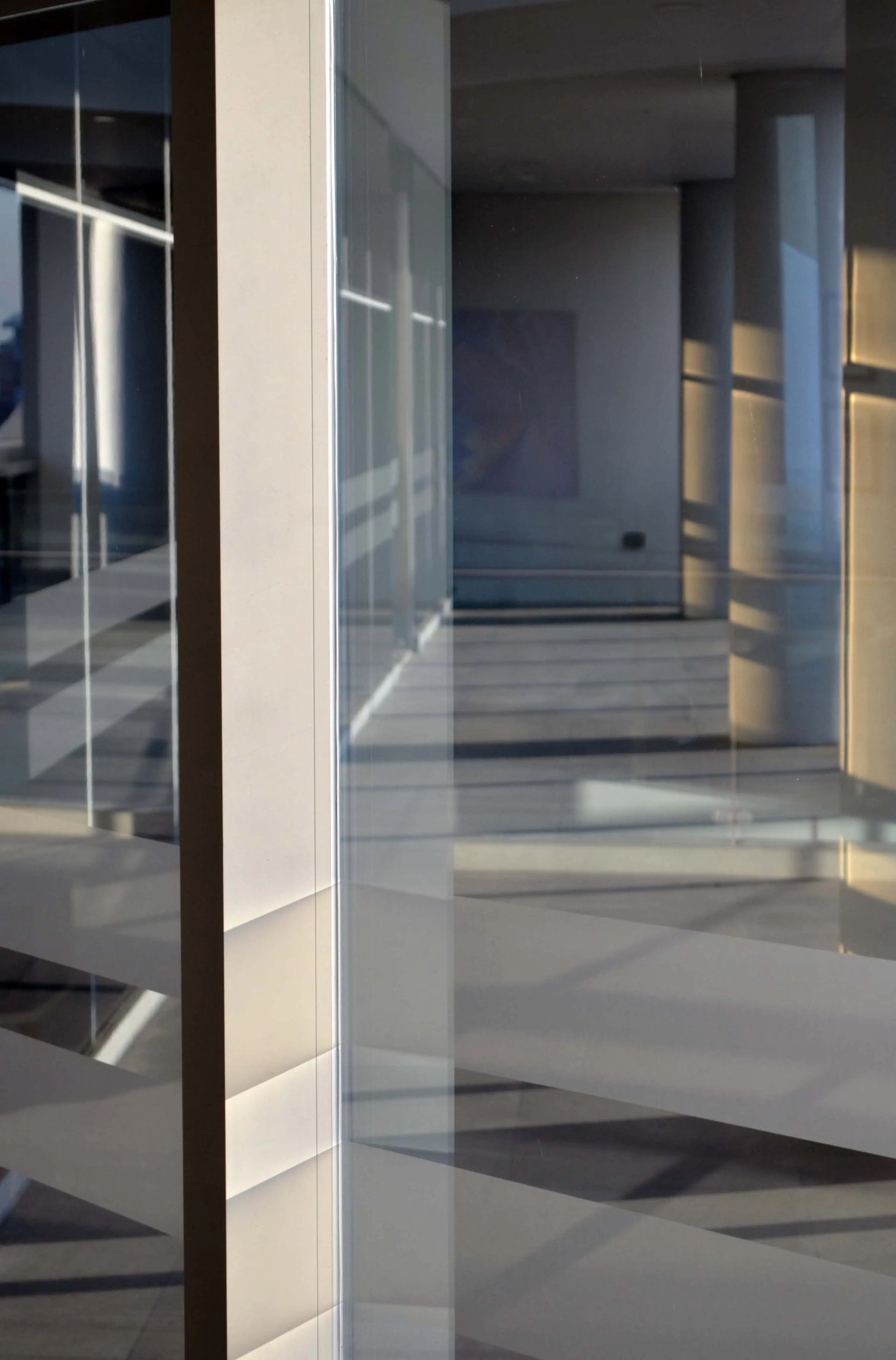Information

Tempered glass: high safety standards in the world of glass
Tempered glass, also known as safety glass, is a testament to human ingenuity in enhancing the inherent strength and safety of glass. This outstanding material, produced through a controlled thermal treatment process, has become an indispensable component of many applications, from architectural marvels to everyday objects. Its properties related to increased resistance to mechanical and thermal stresses, along with its characteristic of breaking into small pieces with rounded and indistinct edges, have made it the preferred choice in situations where safety and durability are of paramount importance. This comprehensive presentation will uncover the secrets of the manufacturing process, the unique properties, diverse applications and advantages of tempered glass, revealing why it occupies a key position in the modern global construction.

Tempering process
The process of transforming ordinary float glass into tempered glass involves a fascinating thermal treatment process that alters the internal structure of the glass, giving it exceptional strength and unique characteristics. The tempering process, which resembles a carefully planned dance of heating and cooling, is the key to unlocking the hidden potential of glass.
The process begins with a thorough cleaning and inspection of the float glass pane to ensure its impeccable condition. Any surface imperfections, even microscopic scratches and air bubbles, can act as stress concentrators, potentially weakening the glass during the tempering process. Once considered to be flawless, the glass pane begins its transformative journey through a specially designed tempering furnace.
Inside the furnace, the glass pane is heated to the highest possible temperature in excess of 600°C. First, there is a rapid shrinkage of the outer layers, which lose their ductility and compress the inner layers of the glass. This results in formation of bursting stresses in the inner layers and compressive stresses in the outer layers.
An important moment in the tempering process is the rapid cooling on both sides, i.e. the “quenching” of the heated glass pane by jets of compressed air.
This rapid cooling causes a reversal of stresses. The outer surfaces of the glass cool and shrink faster than the inner core, which leads to a layer of compressive stresses on the surfaces and a layer of bursting stresses within.
The tempered pane can no longer be treated, as any process leads to a loss of properties.
Key properties of tempered glass
The tempering process gives glass an extraordinary set of properties that elevate it to the status of safety glass. These unique characteristics are a direct result of the controlled thermal treatment and the resulting stress patterns, making tempered glass an excellent choice for a variety of applications.
● Increased strength and safety. Tempered glass is characterised by exceptional strength, which makes it highly resistant to impacts, bending and scratches.
● Excellent thermal resistance. Tempered glass offers outstanding thermal resistance, being able to withstand significant temperature fluctuations without cracking or breaking.
● Safe cracking pattern. Perhaps the most distinctive feature of tempered glass is its unique cracking pattern. Unlike ordinary glass, which breaks into large and sharp shards, tempered glass breaks into small pieces with blunt edges, which greatly minimises the risk of injury.
● Versatility and adaptability. Tempered glass retains the inherent versatility of float glass to meet specific design requirements.

Multiple applications for tempered glass

Architectural applications:
● structural glazing,
● partitions,
● shower enclosures.
Other significant applications:
● domestic appliances,
● furniture and doors,
● decorative elements.
Tempered glass is a remarkable example of human ingenuity in transforming a fragile material into safety glass. Its exceptional strength, unique cracking pattern and versatile nature have made it an indispensable component in a variety of industries, protecting lives and enhancing the functionality of countless applications. As research and development continues to push the boundaries of glass technology, tempered glass is ready to play an even more significant role in the future, contributing to the creation of a safer, more sustainable and aesthetically pleasing world.

